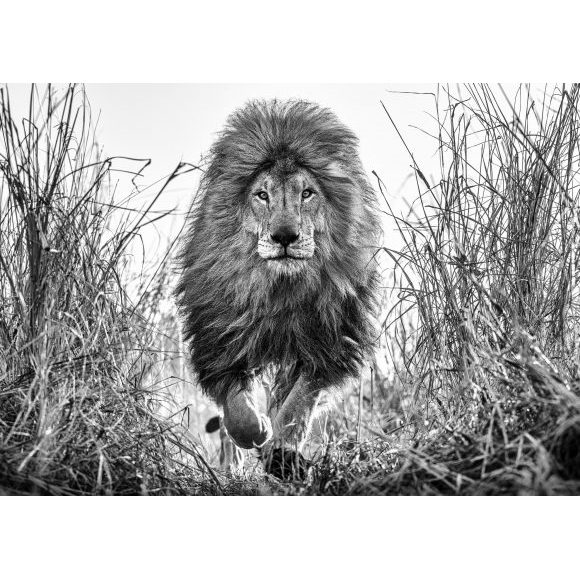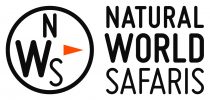Letter From Kenya
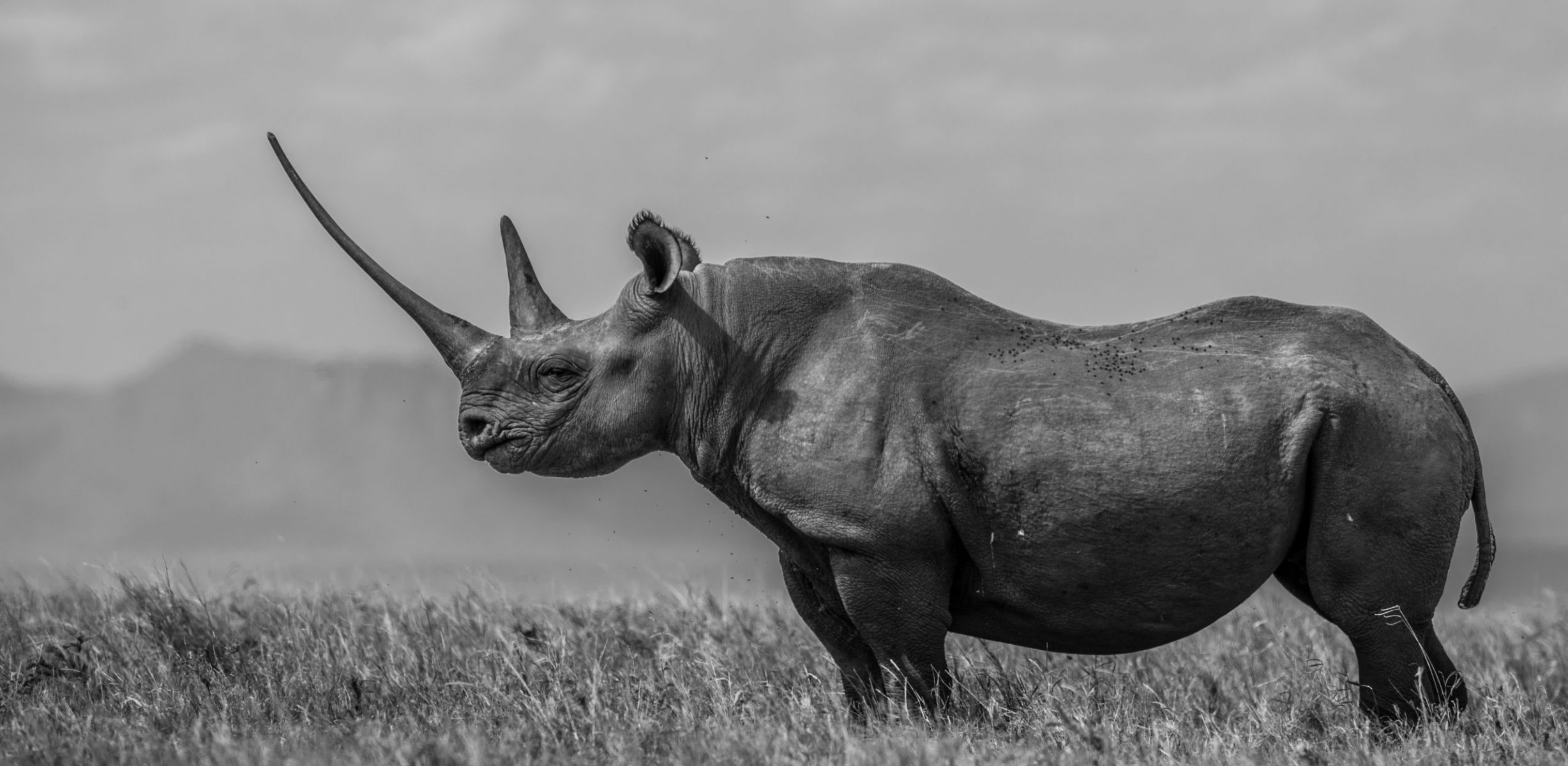
When I am asked to name my favourite location for filming the natural world of Sub-Saharan Africa, I struggle to give an immediate answer. Ostensibly it is such a simple question, but it is one that tends to provoke a rambling and inarticulate soliloquy on my part with no emphatic answer. My problem is not that the answer depends on the personal tastes of the individual, because I am being asked as an individual, the problem is simply that I struggle to filter, condense and be brief.
In my musings, I am always conscious that my career in fine art photography changed as a result of one late afternoon in South Sudan, so that new and dangerous country will always hold a special place in my heart. But that one image – Mankind – was a one off and the question requires a more dispassionate answer.
I do think that for those without financial or time constraints,
it is certainly difficult to beat the wildlife experience of Okavango, Botswana. Equally, for convenience, comfortable lodging at reasonable prices and “the Big 5”, South Africa has much to offer. The migration in the Serengeti, Tanzania is one of nature’s great spectacles and to the south, Mana Pools, Zimbabwe can host a raw wildlife experience that is “far from the madding crowd”, as indeed can Zambia. Rwanda has made a remarkable recovery as a country and the brief moments with the mountain gorillas are unforgettable. A trip to Virunga is a must for anyone that has the time and the budget. The same could be said for Namibia which, in my view, is one of the most scenically spoiled nations in the world.
But when I am done with that ramble, I do conclude that Kenya has to be my first-choice country in Africa for my kind of photography. Others will have
their personal favourites, but my view is simply a function of where, empirically, I have had the most success as a photographer. This may seem rather clinical, but I need content and I would not return as often to a country which over time yielded less than others – irrespective of the beauty or charm of the place. There is also surely a dynamic where successful trips bend back to subconsciously distort one’s fondness for that country. So in essence a discussion of where my favourite country is for filming, simply requires a quick retrospective of the images from all my previous trips to the continent. All the file meta-data on this point unequivocally towards Kenya. As I write this, I promise in the future to answer the innoccent question with “KENYA”.
Part of my problem is that there are material geopolitical issues in Kenya and I see a different canvas than the one that romanticists and tourist companies paint.
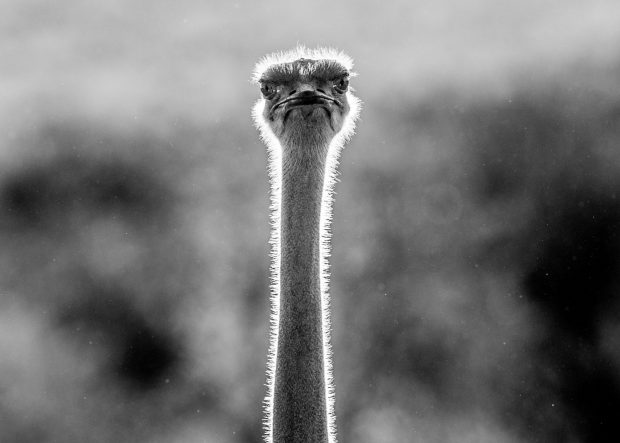
WTF!
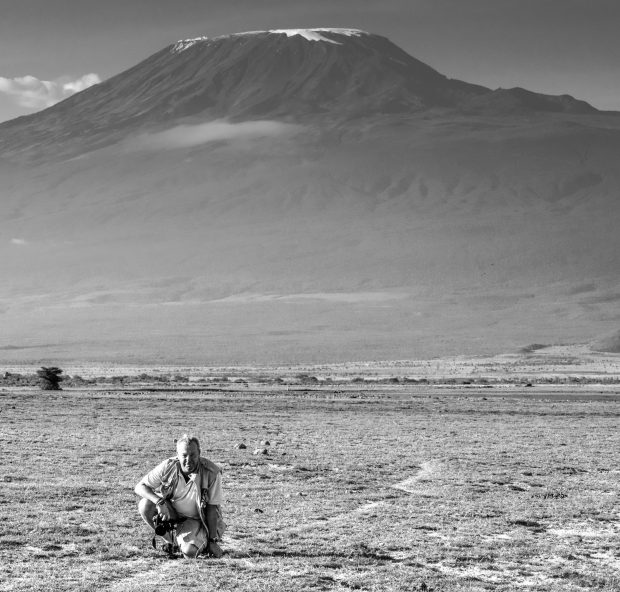
David Under Mt. Kilimanjaro
For some time, it has been a troubled country that has endured all too frequent terrorist attacks from Al-Shabaab and others. Then this year, the drought in the Rift valley has added a new danger, as the lack of rain has caused nomadic herdsmen to move their cattle into more verdant conservation areas in parts of Laikipia and show little or no regard for land ownership.
The situation is complicated by the fact that local politicians have traditionally used cattle ownership as a means of money laundering and they are consequently compromised in their efforts to restore law and order. White land owners in Laikipia live under constant threat of trouble when grass and water are available elsewhere. Life is cheap in Africa.
The UN believe that the Kenyan population will grow by 1 million a year (3,000 new mouths a day) for the next 40 years. On that basis by 2050, the population is forecast to be a staggering 85 million. This has grave implications for a country with so many issues already – the shortage of housing and pastural land being the most pressing.
I firmly believe that population growth and animal habitat loss will soon take over from poaching as the conservationist’s biggest enemy in the efforts to protect the rhino and the elephant. Certainly, no factor in East Africa has played a greater role in the decline of Africa’s lion population. Kenya had material issues even before we throw in this revised forecast of a net 3,000 new citizens a day. A sobering thought looking forwards.
I am not fond of the two most familiar “in land” locations in the country for foreigners. Nairobi holds no appeal for me – it is a charmless, traffic congested city, riddled with corruption and poverty. Whilst I accept that this is true of many African capitals, romanticists speak of Nairobi as if it were still the most glamorous outpost of the British Empire. Films such as “Out of Africa” and “White Mischief” fuelled the contemporary misconception that it remainds the home of the “ex-pat” African fairytale. Whilst there are pockets of colonial splendour and exclusive private member clubs that remind us of the so called “glory days”, there is no real glamour in 99% of Nairobi. I would rather visit the dentist than go through customs or security at Nairobi airport and in the last three years, my passport suggests I have tested this trade over 30 times.
Even before the Al-Shabaab terrorist event at Westgate Mall in 2013, I would always watch my back in the city. There is an undercurrent of menace – one that is not eased by the presence of the police – a force that many would contend is corrupt to the core. I try to leave Nairobi as soon as I possibly can and only overnight when absolutely necessary.
To the west, the famous Masai Mara is really too mainstream for me – the wildlife is undeniably rich and varied, but the traffic and regulation is heavy. It is not as “raw” or elemental an experience as other parks and on my arrival, I don’t get the adrenaline rush or buzz that I experience elsewhere. These are visceral emotions, but they do seem somehow to bend back and affect my photography. Maybe it’s just that I struggle to impose and express myself – particularly when there are 10 other jeeps around mine. I have never had much joy in the Mara and I am not sure when I will return. I would certainly not go there for peace and serenity and whilst it can be a spectacular holiday destination, it is not necessarily an artist’s destination.
There are other National Parks in Kenya that also don’t work for me – the legendary Tsavo National Park to the South is too vast (22,000 km2) to be able to take control and sadly so many of the massive bull elephants like Satao and his son have been killed by poachers. Peter Beard worked in Tsavo in its prime, but the wildlife count has been hammered since those days and it is now a low percentage option for my kind of work. I could use a helicopter to find the few remaining big bulls, but that seems too invasive – let alone very expensive.
Meanwhile to the North, the semi nomadic Samburu tribe don’t make life as easy as it once was for the wildlife or the filming of that wildlife.
They can be a dangerously nihilistic tribe – as recent news suggests – and I have little appetite to work in the North right now. Nearer Nairobi, Aberdare is a little too densely vegetated and hilly for my ground up approach.
Even before the Al-Shabaab terrorist event at Westgate Mall in 2013, I would always watch my back in the city. There is an undercurrent of menace – one that is not eased by the presence of the police – a force that many would contend is corrupt to the core. I try to leave Nairobi as soon as I possibly can and only overnight when absolutely necessary.
To the west, the famous Masai Mara is really too mainstream for me – the wildlife is undeniably rich and varied, but the traffic and regulation is heavy. It is not as “raw” or elemental an experience as other parks and on my arrival, I don’t get the adrenaline rush or buzz that I experience elsewhere. These are visceral emotions, but they do seem somehow to bend back and affect my photography. Maybe it’s just that I struggle to impose and express myself – particularly when there are 10 other jeeps around mine. I have never had much joy in the Mara and I am not sure when I will return. I would certainly not go there for peace and serenity and whilst it can be a spectacular holiday destination, it is not necessarily an artist’s destination.
There are other National Parks in Kenya that also don’t work for me – the legendary Tsavo National Park to the South is too vast (22,000 km2) to be able to take control and sadly so many of the massive bull elephants like Satao and his son have been killed by poachers. Peter Beard worked in Tsavo in its prime, but the wildlife count has been hammered since those days and it is now a low percentage option for my kind of work. I could use a helicopter to find the few remaining big bulls, but that seems too invasive – let alone very expensive.
Meanwhile to the North, the semi nomadic Samburu tribe don’t make life as easy as it once was for the wildlife or the filming of that wildlife.
They can be a dangerously nihilistic tribe – as recent news suggests – and I have little appetite to work in the North right now. Nearer Nairobi, Aberdare is a little too densely vegetated and hilly for my ground up approach.

In my mind, Amboseli is about one thing - the elephant - and I don't need anything else.
Over the few days, I increasingly believed that there was much to be said for the off season as it was just me and the elephants.
The evenings on my own were a little quiet conversationally, but I would take this over the “Sundowners” party of the Masai Mara, any day. I am in Amboseli to work, not make small talk with “fly by” safari goers – no matter how charming some of these people may be. It can be a singular job in the field.
The three elephant images in this newsletter are as strong as I can do. I am excited to see the large prints from the laboratory in Los Angeles and I’m sure they will again validate the use of aggressive wide angle lenses and remote control equipment.
For most photographers, these choices would
seem an unnecessary gamble with a very high probability of failure. I would agree to the second part of this statement – intuitively, transcending images tend to be captured when there is a high probability of failure – otherwise they would not be so rare. But I want to gamble and it is – in my view – a necessary gamble. The world does not need to see another picture of an elephant from a jeep. I never forget how content spoilt we all are and in all that I do, I want to rip up the traditional rule book. If I don’t get an image – that’s okay – it’s not meant to be easy. Don’t eat the low hanging fruit and all that!
Wildlife viewing in the plains north of Mount Kenya at the Lewa Conservancy can be the best in East Africa. Thanks to the “in the field” conservation efforts of Brits such as Ian Craig,
and Mike and Sarah Watson and the funding from NGOs such as Tusk, Lewa is a paragon in African conservation efforts. The resident population of rhinos, including those relocated to adjacent Borana, has doubled in seven years. Lewa is a ray of light.
The Lewa Conservancy has one other jewel resident – the most photographic species of zebra in the world – the Grevy. Their stripes are so clear and very much white on a background of black. They are an artist’s dream.
I know that the image, The Factory, is a bold choice and an outlier for me. As the ground breaking American photographer Diane Arbus said, “a photograph is a secret about a secret. The more it tells you the less you know.”




